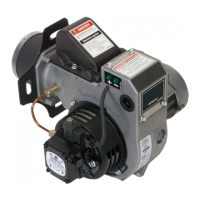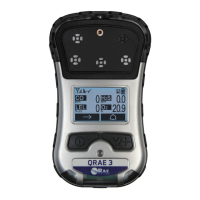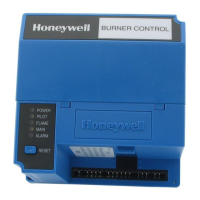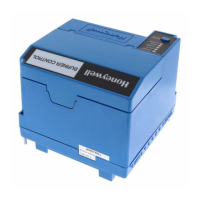24
Honeywell Titan SCBA, 20132
with a gloved hand, or pass warm air over it.
c. Heads-Up Display
WARNING
DO NOT use the SCBA if there is ice on the
HUD or audible alarm. Malfunction of either
alarm could result in a failure to recognize
that the SCBA is near the end of its service
life, causing personal injury or death.
i. During cold weather conditions, ice can form on
the HUD display.
ii. Verify that the HUD display is free from ice.
iii. If there is any ice on the HUD display, remove
the ice prior to returning the SCBA to service.
8. First Stage Pressure Reducer
During cold weather conditions, ice may form on the
exterior surfaces of the rst stage pressure reducer.
WARNING
Use extreme care when changing cylinders.
DO NOT allow moisture or ice to enter the
regulator system. Moisture or ice entering
the regulator system may cause the SCBA to
freeze up, restricting or stopping air fl ow to
the user, resulting in death or injury. Failure
to comply with this warning may lead to
personal injury, illness, or death.
9. Rapid Intervention Crew/Company Universal Air
Connection (RIC UAC)
a. During cold weather conditions, ice may form on
the RIC UAC protective cover.
b. Prior to use, visually inspect the RIC UAC compo-
nents for ice.
c. Remove or melt the ice, then dry the RIC UAC
coupler and protective cover to avoid water entering
the RIC UAC coupler.
d. Always keep the protective cover installed on the
RIC UAC coupler during cold weather conditions
when the RIC UAC is not in use.
10. EBSS (Buddy Breather)
a. During cold weather conditions, ice may form on
the EBSS assembly.
b. Prior to use, visually inspect the EBSS components
for ice.
c. Remove or melt the ice, then dry the EBSS compo-
nents to avoid water entering the regulator.
d. Always keep the rubber cap installed during cold
weather conditions when the EBSS is not in use.
11. Training and Use
a. Conduct training sessions for cold weather opera-
tions using all equipment and accessories which may
be used during actual operations.
b. During cold weather operations, do not place cylin-
ders or SCBA components into wet or snowy areas.
k. If the AIR KLIC buttons are frozen and the regulator
cannot be removed from the regulator holder, do not
force the buttons. Unbuckle the waist belt, and place
the belt, regulator holder, and regulator under outer-
wear next to your body to warm it until the AIR KLIC
buttons function properly.
4. Backpack
a. Inspect the tank band cam-over mechanism, shoul-
der pad adjustment buckles, and waist strap adjust-
ment buckles for ice.
b. Remove ice by exing and moving the straps
through the adjustment buckles.
5. Regulator Holder
a. Visually inspect the regulator holder for ice prior to
use.
b. Remove ice by warming the regulator holder, plac-
ing it under outerwear near the body to warm.
6. Cylinder Valve
a. During cold weather conditions, ice can form on
the cylinder valve. Ice may interfere with the cylinder
ratchet lock mechanism, if so equipped.
WARNING
Do not use heat above 160°F (71°C) or direct
fl ame to melt ice. Failure to comply with this
warning may lead to personal injury, illness,
or death.
b. Warm the cylinder valve to melt the ice and return
the ratchet lock mechanism to proper working order.
NOTE
Remove ice and water from cylinder valve
threads prior to lling in cold conditions.
7. Gauge and Alarms
WARNING
DO NOT use the SCBA if there is ice on
the gauge face or alarm. Gauge or alarm
freezeup could result in a failure to realize
that the SCBA is near the end of its service
life, causing personal injury or death.
a. Gauge
i. Verify that the gauge face is free from ice.
ii. If there is any ice on the gauge, remove the ice
prior to returning the SCBA to service.
iii. If the SCBA is not equipped with a PASS de-
vice, during use, turn the gauge to face the body.
Check the gauge frequently for ice buildup.
b. Audible Alarm
i. During cold weather conditions, ice can form on
the audible alarm, rendering the alarm inaudible.
Remove the ice or melt it with a gloved hand.
ii. Ice may obstruct the alarm cover vent holes and
the end of the bell piston (if so equipped), interfer-
ing with the operation of the SCBA. Melt the ice
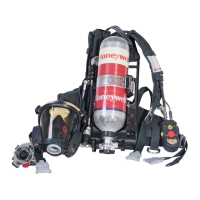
